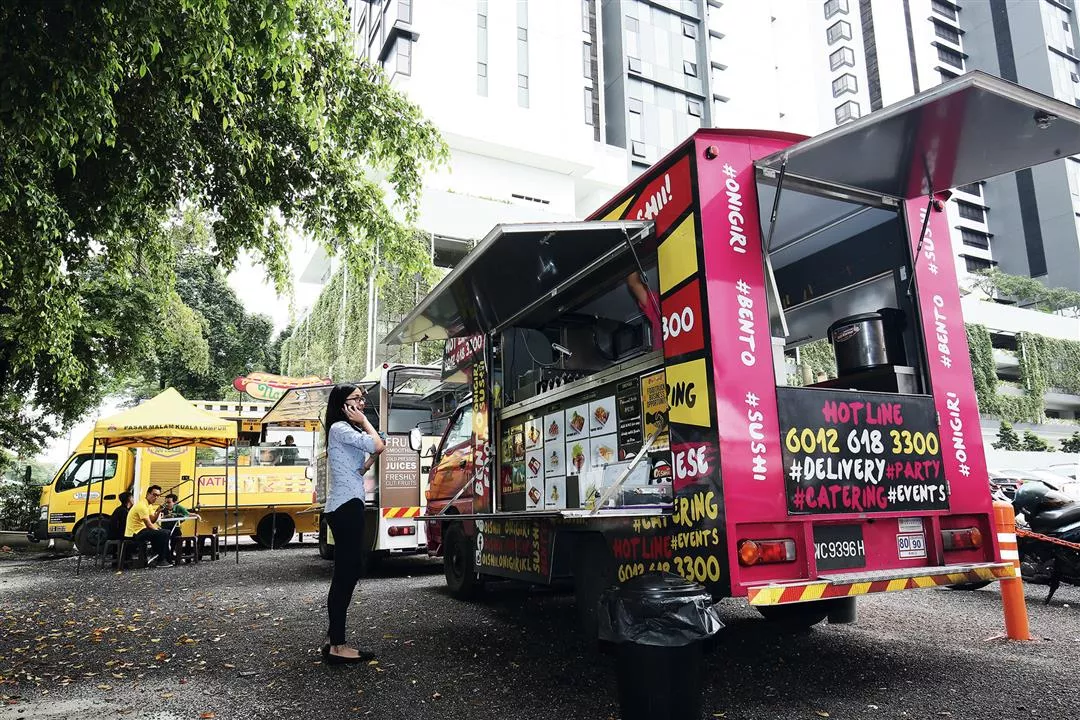Street food meets high-tech
Beyond its ethnic diversity, one of the most characteristic elements of Malaysian cuisine is “mamak,” traditional street-food stalls popular with nine-to-fivers.
In recent years, though, a new option has begun setting up in parking lots in business districts—food trucks. These trucks, part of the Mobile Food Trucks and Street Food Association (MSA), aim to provide another option for satisfying hungry office workers, and are the number-one partnership target of Taiwan’s iCHEF.
iCHEF is an iPad-based point-of-sale (POS) system. POS systems are most commonly used in the restaurant and retail sectors, and among their primary functions is keeping track of inventory, sales, and customer purchasing behavior.
iCHEF’s expansion into Malaysia started in October 2016, when the company’s Southeast Asia business development director Nick Yu arrived in Kuala Lumpur. Prior to that, the iCHEF POS system had already been tested in the Hong Kong and Singaporean markets, with Kuala Lumpur their third overseas location.
Greater Kuala Lumpur boasts a population of some 7.2 million, roughly on par with Greater Taipei, and is home to a diverse and booming restaurant industry. With the population eating out around 20% of the time, the market is a tempting one.
Restaurants here are down-to-earth places, but Yu quickly found that Kuala Lumpur restaurateurs already had some familiarity with POS systems.
In 2015, the Malaysian government announced that restaurants would be subject to a 6% sales tax, which sparked a wave of interest in new POS systems. It also made iCHEF’s relatively late entry to the market a challenging one.
“Throughout our various markets, iCHEF’s advantage has always been that it has grown from a foundation in the restaurant industry, and is thus a particularly professional choice for that industry,” says Yu confidently. In the early days of iCHEF’s development, the engineers actually moved into a restaurant for a week to see for themselves how restaurants run and to understand the various processes so that they could tailor the system to them. iCHEF also provides a range of analytical reports, including daily operating reports, to help restaurateurs stay on top of what’s going on and make data-based adjustments to their marketing strategies.
Abigail Lim has only recently moved into the restaurant industry, becoming a member of the Australian franchise Patissez, and she chose iCHEF for her first branch. According to Lim, iCHEF not only covers every aspect of restaurant operations, but also sports an easy-to-use interface and modern design, making it a perfect fit with the style of her restaurant.
In order to quickly build recognition in the market despite their late entrance, iCHEF have partnered with the largest food truck alliance in Southeast Asia, MSA. MSA is a young network that aims to turn around Malaysians’ image of food trucks as dirty and unhygienic. By bringing new structure and standards to the food truck industry, MSA has helped them become a regular part of the Kuala Lumpur cityscape. This concept is very much in line with iCHEF’s own approach, and they soon became an official partner of MSA. After only a month, six food trucks were already using iCHEF, marking the company’s formal foray into the Malaysian market.
Nick Yu has handled this launch single-handedly, and while it has proven to be a challenging market, he remains hopeful about the future: “The iPad market is expected to grow by about 1,000 restaurants a year, so we’re hoping to achieve a market share of around 30‡50% within the year.”

iCHEF’s partnership with the Mobile Food Trucks and Street Food Association was the first shot in their foray into the Malaysian market.